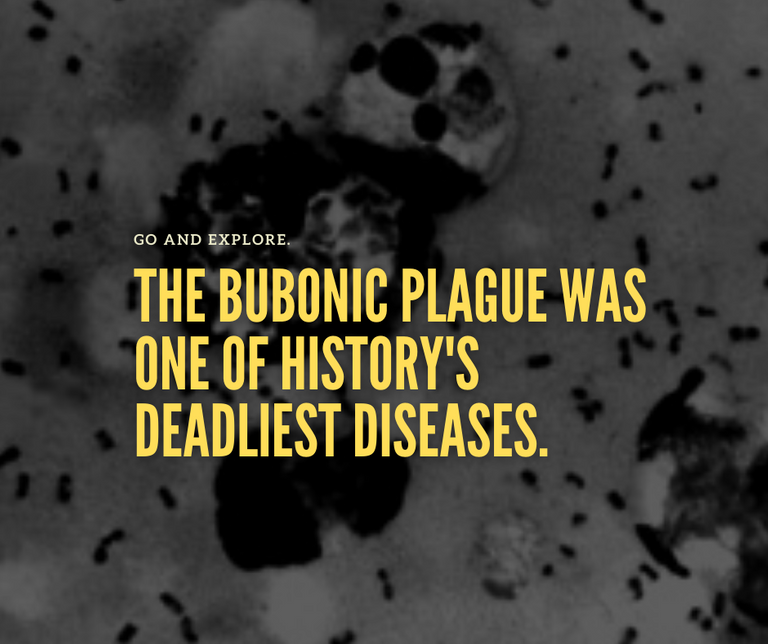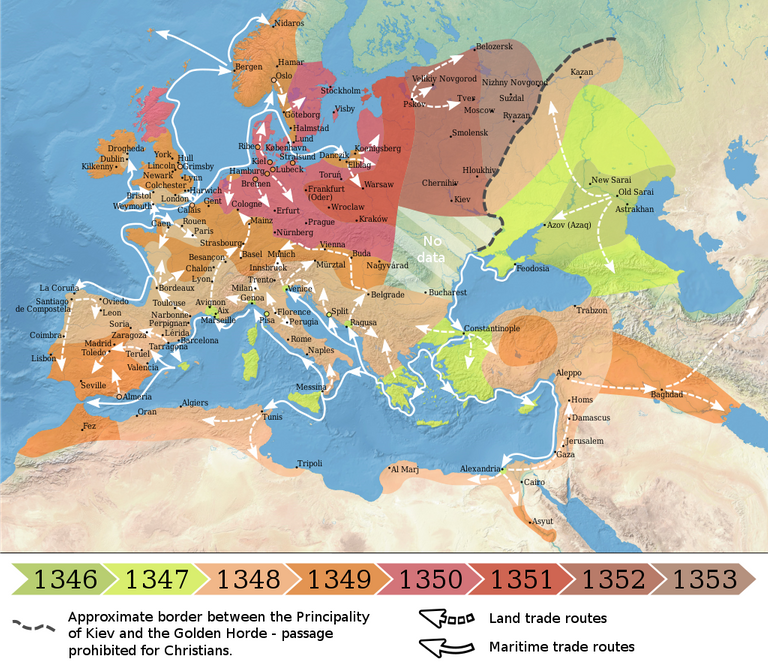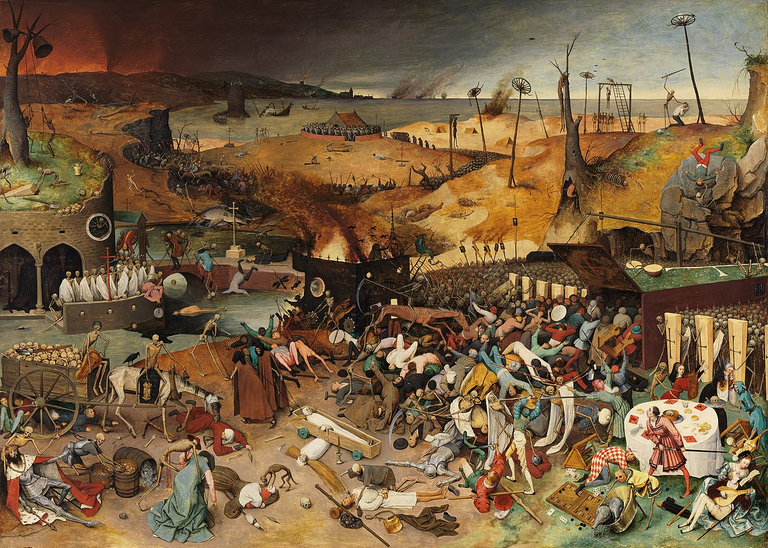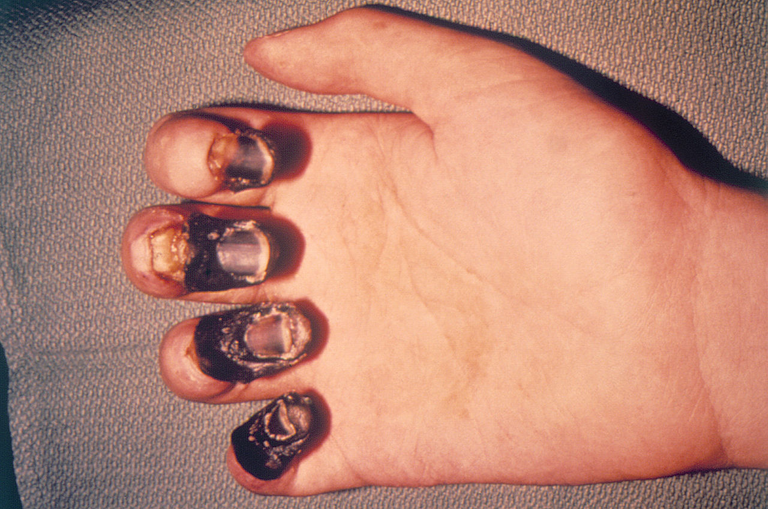The Bubonic Plague was one of history's deadliest diseases.

The Black Death (The Bubonic Plague) was a catastrophic event that caused many people to die. The Bubonic Plague was the most common plague that people would contract. It is a bacterial infection spread by fleas or rodents, which causes inflammation in the lymph nodes. It was defined by enlarged lymph nodes the size of a chicken egg that appeared in the groin, armpit, and neck. The Pneumonic and Septicemic plagues were the other two types of plague, each of which had a near-100 percent death rate. Pneumonic plague is caused when bacteria infect the lungs, causing people to cough and spread the disease from person to person. The Septicemic plague is transmitted through the bloodstream, allowing the bacteria in the blood to multiply, making it impossible for the person to be cured. When people became infected with the plague, they experienced several symptoms, including fever, headaches, and seizures. It also turned most of the infected body parts black, which explains why it's known as the Black Death.
The epidemic occurred primarily as a result of Europeans beginning to trade with the East. Since some of the people involved in trade were infected with the bacteria or carrying it in some of their exports, trading was an important factor in the spread of the disease. Many people in Italy were said to be infected with the Bubonic plague, which was spreading at an alarming pace. The majority of Europeans who had heard of the outbreak had no idea what it was and were concerned about the potential effects of the bacteria. People were unaware that the bacteria was spread by rodents and fleas that traveled from place to place, and they were also unprepared for the dangers of the Black Death. Sicily was the first European state to be infected with the bubonic plague, which later spread to Marseille via trade routes. It wasn't long before the plague began to spread again, this time at an even faster pace, infecting six towns in the year 1348. Venice, Central Italy, Paris, England, London, and Austria are the six towns. The plague began to spread among the trade routes between Moscow and Germany.

Spread of the Black Death in Europe and the Near East (1346–1353) | Phot Credit: Flappiefh
Religion was becoming a topic of discussion among the general public. Since they didn't understand the biology behind the disease, people started making conspiracies of it being a punishment from God. They said that the only way to get rid of the plague was to earn God's forgiveness. People claimed that to do that, they needed to rid the nations of heretics and troublemakers. They also claimed that the Jews were contaminating the water for them to become infected. The action of vengeful Christians burning Jews because of their accusations was another consequence of the Black Death. Instead of going to church and praying, Christians started to spread the belief that Jews were to blame for all the deaths, so they killed the Jews as a kind of vengeance.
People tried a variety of ways to eliminate the disease, but because they didn't know what caused it, the situation became much worse for those who were infected. People were forced to cut themselves open to get the disease out of their blood. The reason they made people cut themselves was that if the disease was in the blood, the veins leading to the heart needed to be cut open to enable the bacteria to escape. Another method used by the Europeans to eliminate the plague was to regulate what a person could eat to avoid being infected with the disease.

Pieter Bruegel's The Triumph of Death reflects the social upheaval and terror that followed plague, which devastated medieval Europe. | Phptp Credit: Pieter Brueghel the Elder - Museo del Prado
The diet prohibited the consumption of smelly foods such as meat, cheese, and fish, and only permitted the consumption of bread, fruit, and vegetables. The Europeans often considered witchcraft as a way to keep the pestilence at bay. They decided to mount a live hen to the swelling to draw the disease out of the body, as well as drink a glass of their urine twice a day. They also attempted to cure the plague by murdering people and cleaning their bodies with rose water and vinegar. Lancing the buboes was another option that Europeans tried to eliminate the Bubonic plague, but they were unsuccessful. They tried a mixture of tree resin, white lily roots, and dried human excrement after cutting the body open from the buboes.
At some stage, noble men entered flagellant ceremonies that ranged from location to location, performing public self-punishment and punishment. As the townspeople looked on, they would beat themselves and each other with thick leather straps strewn with sharp metal fragments. The flagellants performed this practice almost three times a day for 33 1/2 days. They would then move to the next town and repeat the process.

A hand showing how acral gangrene of the fingers due to bubonic plague causes the skin and flesh to die and turn black | Photo Credit: Centers for Disease Control and Prevention's Public Health Image Library (PHIL)
Though the flagellant movement provided some comfort to those who felt powerless in the face of unknown catastrophe, it soon became a source of concern for the Pontiff, whose expertise the flagellants had started to usurp. The campaign disintegrated in the face of papal resistance. By the early 1350s, the Black Death had passed, but the plague would return every few generations for decades. Modern sanitation and public-health practices have significantly reduced the disease's effects, but it has yet to be eliminated.
In conclusion, he Black Death was significant because of the many effects it had on the world and culture during the 1300s. The Black Death's most significant influence was the vast number of people who died. Historians believe that the Black Death reduced Europe's population by about 60% in the first few decades, showing a profound effect on family and social life in communities across Europe.
Another serious consequence of the catastrophic event was the economic damage or effect caused by the plague's spread. The spread of the plague caused panic among large crowds, who feared being infected. Overall, the Black Death was a significant event that completely altered people's lives across Europe and Asia. The spreading of the bubonic plague was to blame, and it resulted in large death tolls everywhere it occurred. It is remembered and considered to be one of the most important pandemics in human history.
References
- The Black Death: The Greatest Catastrophe Ever
- Black Death History
- Plague was one of history’s deadliest diseases—then we found a cure
- From Black Death to fatal flu, past pandemics show why people on the margins suffer most
- Black Death facts: your guide to “the worst catastrophe in recorded history”
- What Was the Black Death?
- The Bright Side of the Black Death
Thanks for your contribution to the STEMsocial community. Feel free to join us on discord to get to know the rest of us!
Please consider supporting our funding proposal, approving our witness (@stem.witness) or delegating to the @stemsocial account (for some ROI).
Please consider using the STEMsocial app app and including @stemsocial as a beneficiary to get a stronger support.
All plagues are bad but yea I would not want my hand to look like that. Its why people should always keep track of public health practices.
Yeah Plagues are terrible. I don't want to have that hand too.